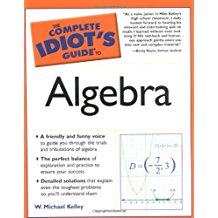What Is The Discriminant Used For
All Signs Point to the Discriminant
Take you ever owned i of those Magic 8 Balls? They expect like comically oversized puddle assurance, but take a flat window built into them, so that you tin run across what's insidea 20-sided dice floating in icky opaque bluish goo. Supposedly, the billiard ball has prognostic powers; all you lot have to practise is ask information technology a question, give it a shake, and slowly, mystically, like a petroleum-covered seal emerging from an oil spill, the die will ascension to the little window and reveal the reply to your question.
The quadratic equation contains a Magic viii Ball of sorts. The expression b 2 - fourair conditioning from beneath the radical sign is chosen the discriminant, and it can really make up one's mind for yous how many solutions a given quadratic equation has, if you don't feel like actually calculating them. Because that an unfactorable quadratic equation requires a lot of work to solve (tons of arithmetics abounds in the quadratic formula, and a whole bunch of steps are required in the completing the square method), it's ofttimes useful to gaze into the mystic beyond to make sure the equation even has any real number solutions before you lot spend any time actually trying to notice them.
Talk the Talk
The discriminant is the expression b 2 - fourair conditioning, which is defined for any quadratic equation ax ii + bx + c = 0. Based upon the sign of the expression, you can make up one's mind how many real number solutions the quadratic equation has.
Here's how the discriminant works. Given a quadratic equation ax 2 + bx + c = 0, plug the coefficients into the expression b two - fourac to see what results:
- If you go a positive number, the quadratic volition have two unique solutions.
- If y'all become 0, the quadratic will take exactly i solution, a double root.
- If you get a negative number, the quadratic volition have no real solutions, just two imaginary ones. (In other words, solutions will incorporate the i you learned about in Wrestling with Radicals.)
The discriminant isn't magic. It just shows how important that radical is in the quadratic formula. If its radicand is 0, for example, then yous'll go
a single solution. If, nevertheless, b ii - 4ac is negative, then y'all'll have a negative inside a foursquare root sign in the quadratic formula, significant only imaginary solutions.
Example 4: Without computing them, determine how many existent solutions the equation 3x 2 - 210 = -ane has.
Solution: Fix the quadratic equation equal to 0 by adding i to both sides.
- iiix two - iix + 1= 0
You've Got Problems
Problem iv: Without calculating them, determine how many real solutions the equation 25x 2 - xlx + 16 = 0 has.
Prepare a = three, b = -2, and c = ane, and evaluate the discriminant.
- b 2 - ivac
- =(-2)2 - 4(3)(1)
- = iv - 12
- = -eight
Because the discriminant is negative, the quadratic equation has no real number solutions, only 2 imaginary ones.

Excerpted from The Complete Idiot's Guide to Algebra 2004 by W. Michael Kelley. All rights reserved including the right of reproduction in whole or in part in whatsoever grade. Used by system with Blastoff Books, a member of Penguin Group (USA) Inc.
You can purchase this volume at Amazon.com and Barnes & Noble.
- Algebra: The Quadratic Formula
What Is The Discriminant Used For,
Source: https://www.infoplease.com/math-science/mathematics/algebra/all-signs-point-to-the-discriminant
Posted by: emersonwaallovar.blogspot.com


0 Response to "What Is The Discriminant Used For"
Post a Comment